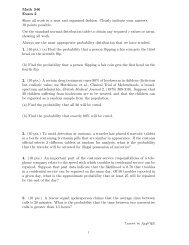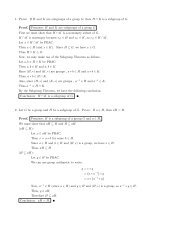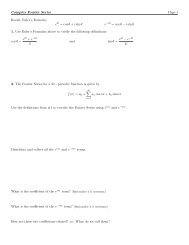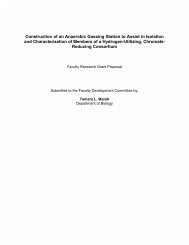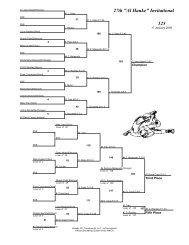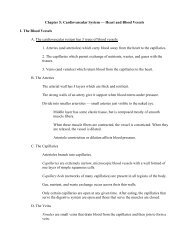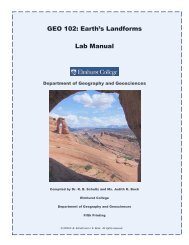Free Executive Summary - Elmhurst College
Free Executive Summary - Elmhurst College
Free Executive Summary - Elmhurst College
Create successful ePaper yourself
Turn your PDF publications into a flip-book with our unique Google optimized e-Paper software.
Learning to Think Spatially: GIS as a Support System in the K-12 Curriculum<br />
http://www.nap.edu/catalog/11019.html<br />
SPATIAL THINKING IN EVERYDAY LIFE, AT WORK, AND IN SCIENCE 77<br />
FIGURE 3.22 Ascribing meaning to the shape of a natural object: reasoning from first principles. SOURCE:<br />
Kusnick, 2002.<br />
3.7) is interesting because neither she nor anyone else knew any details about the tectonic and<br />
volcanic processes that form the seafloor geomorphology; yet her maps in areas of sparse data (the<br />
Southern Oceans, for example) are far better than would have been possible by interpolating from<br />
data alone. In these examples, the physical oceanographer and the field geologist are guided by<br />
knowledge of the processes that shaped the unseen parts of the puzzle, but in Tharp’s case she<br />
seems to have developed a spatial intuition or feel for the nature of the seafloor before the formative<br />
processes were understood.<br />
Describing the Position and Orientation of Objects Encountered in the Real World Relative<br />
to a Conceptual Coordinate System Anchored to Earth<br />
Learning to measure the dip and strike of a sedimentary strata or other planar surface is a rite<br />
of passage for introductory geoscience students (Figure 3.25). This technique requires Euclidean<br />
spatial skills (see Appendix C). Many students seem incapable of grasping this technique at any<br />
kind of deep or intuitive level; at best, they can learn to memorize a sequence of steps and apply<br />
them mechanically.<br />
Until the advent of GPS navigation for research vessels, navigation was a huge issue for<br />
seagoing oceanographers. The challenge is to make the most precise seafloor maps, ground-truthed<br />
Copyright © National Academy of Sciences. All rights reserved.



